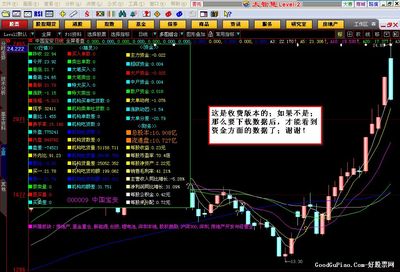OR值的全称是oddsratio, OR值是相对危险度,又称比值比,对于发病率很低的疾病来说,它是OR值即是相对危险度的精确估计值。
计算公式如下:
Odds ratio, 95%CI
假定我们要鉴别一个基因(或者标记位点SNP)有两个等位基因(等位):记为
Allele 1 | Allele 2 |
Allele 1 | Allele 2 | |
病例 | A | B |
对照 | C | D |
odds值在病例和对照可以计算如下:
病例Odds =A (A +B)/ B (A + B) =A/ B
对照Odds =C (C +D) / D (C + D) =C/ D
那么在这一点的OR值可以计算如下:
Odds Ratio = (A/ B)/(C / D) =AD/ B C
同样的,95%Confidence Intervals (CIs) 值可以计算如下:
95% CI ofln(OR) =ln(OR)±1.96(1/A+ 1/B+ 1/C+ 1/D)0.5
95% CI of OR = e95% CI ofln(OR)、
logistic回归中,
OR值=1,表示该因素对疾病的发生不起作用
OR值大于1,表示该因素是一个危险因素
OR值小于1,表示该因素是一个保护因素
同时最好要算出它的95%CI
OR为比值比,也称优势比
当我们已知疾病的发生状况,比较疾病组与非疾病组危险因素暴露的情况差异时(即回顾性研究时),用OR进行定量描述。OR是否有意义还要看其P值,一般95%CI上限小于1时说明可能是保护因素,相反如果下限大于1则说明可能是危险因素。
定义:(王建华主编)第6版p81:优势比又称比值比,交叉乘积比。指病例组中暴露人数与非暴露人数的比值除以对照组中暴露人数与非暴露人数的比值。即(a/c)/(b/d)=ad/bc
协和版执医应试指导p293:比值比是反映关联强度的指标,即病例组和对照组的两个暴露比值(a/m1)/(c/m1)与(b/m2)/(d/m2)之比。化简得ad/bc.
Dear Professor Mean, There issome confusion about the use of the odds ratio versus the relativerisk. Can you explain the difference between these twonumbers?
Both the odds ratio and the relative risk compare the likelihoodof an event between two groups. Consider the following data onsurvival of passengers on the Titanic. There were 462 female passengers: 308 survived and 154died. There were 851 malepassengers: 142 survived and 709 died (see tablebelow).
Alive Dead Total Female 308 154 462 Male 142 709 851 Total 450 863 1,313
Clearly, a male passenger on the Titanic was more likely to diethan a female passenger. But how much more likely? You can computethe odds ratio or the relative risk to answer this question.
The odds ratio compares the relative odds of death in eachgroup. For females, the odds were exactly 2 to 1 against dying (154/308=0.5). Formales, the odds were almost 5 to 1 infavor of death (709/142=4.993). The odds ratio is9.986 (4.993/0.5). There is aten fold greater odds of death for males than forfemales.
The relative risk (sometimes called the risk ratio) compares theprobability of death in each group rather than the odds. Forfemales, the probability of death is 33%(154/462=0.3333). For males the probability is83% (709/851=0.8331). Therelative risk of death is 2.5(0.8331/0.3333). There is a 2.5 greater probabilityof death for males than for females.
There is quite a difference. Both measurements show that menwere more likely to die. But the odds ratio implies that men aremuch worse off than the relative risk. Which number is a fairercomparison?
There are three issues here: The relative risk measures eventsin a way that is interpretable and consistent with the waypeople really think. The relative risk, though, cannotalways be computed in a research design. Also, the relativerisk can sometimes lead to ambiguous and confusingsituations. But first, we need to remember that fractions arefunny.
Fractions are funny.
Suppose you invested money in a stock. On the first day, thevalue of the stock decreased by20%. On the second day it increased by 20%. You would think that youhave broken even, but that's not true.
Take the value of the stock and multiply by 0.8 to get the priceafter the first day. Then multiply by 1.2 to get the price afterthe second day. The successive multiplications do not cancel outbecause 0.8 * 1.2 = 0.96. A 20% increase followed by a 20% decreaseleave you slightly worse off.
It turns out that to counteract a 20%decrease, you need a 25% increase. That is because0.8 and 1.25 are reciprocal.This is easier to see if you express them as simple fractions:4/5 and 5/4 are reciprocalfractions. Listed below is a table of common reciprocalfractions.
0.8(4/5) 1.25(5/4) 0.75(3/4) 1.33(4/3) 0.67(2/3) 1.50(3/2) 0.50(1/2) 2.00(2/1) Sometimes when we are comparing two groups, we'll put the firstgro--up in the numerator and the other in the denominator. Sometimeswe will reverse ourselves and put the second group in thenumerator. The numbers may look quite different (e.g., 0.67 and1.5) but as long as you remember what the reciprocal fraction is,you shouldn't get too confused.
For example, we computed 2.5 as therelative risk in the example above. In this calculationwe divided the male probability by the female probability. If wehad divided the female probability by the male probability, wewould have gotten a relative risk of0.4. This is fine because 0.4(2/5) and 2.5 (5/2) are reciprocal fractions.
Interpretability
The most commonly cited advantage of the relative risk over theodds ratio is that the former is the more naturalinterpretation.
The relative risk comes closer to what most people think of whenthey compare the relative likelihood of events. Suppose there aretwo groups, one with a 25% chance ofmortality and the other with a 50% chance of mortality. Most people wouldsay that the latter group has it twice as bad. But the odds ratio is 3, which seems too big. Thelatter odds are even (1 to 1)and the former odds are 3 to 1against.
Even more extreme examples are possible. A change from25% to 75% mortality representsa relative risk of 3, but anodds ratio of 9.
A change from 10% to 90%mortality represents a relativerisk of 9 but an odds ratio of81.
There are some additional issues about interpretability that arebeyond the scope of this paper. In particular, both the oddsratio and the relative risk are computed by division and arerelative measures. In contrast, absolute measures, computed asa difference rather than a ratio, produce estimates with quitedifferent interpretations (Fahey et al 1995, Naylor et al1992).
Designs that rule out the use of the relativerisk
Some research designs, particularly the case-controldesign, prevent you from computing a relative risk. Acase-control design involves the selection of research subjects onthe basis of the outcome measurement rather than on the basis ofthe exposure.
Consider a case-control study of prostate cancer risk and malepattern balding. The goal of this research was to examine whethermen with certain hair patterns were at greater risk of prostatecancer. In that study, roughly equal numbers of prostate cancerpatients and controls were selected. Amongthe cancer patients, 72 out of 129 had either vertex or frontalbaldness compared to 82 out of139 among the controls (see table below).
Cancercases Controls Total Balding 72 82 154 Hairy 55 57 112 Total 129 139 268
In this type of study, you can estimate the probability ofbalding for cancer patients, but you can't calculate theprobability of cancer for bald patients. The prevalence ofprostate cancer was artificially inflated to almost 50% bythe nature of the case-control design.
So you would need additional information or a different type ofresearch design to estimate the relative risk of prostate cancerfor patients with different types of male pattern balding. Contrastthis with data from a cohort study of male physicians (Lotufo et al2000). In this study of the association between male patternbaldness and coronary heart disease, the researchers could estimaterelative risks, since 1,446 physicians had coronary heart diseaseevents during the 11-year follow-up period.
For example, among the 8,159 doctorswith hair, 548 (6.7%) developed coronary heart diseaseduring the 11 years of the study. Among the 1,351 doctors with severe vertex balding, 127 (9.4%)developed coronary heart disease (see table below). Therelative risk is 1.4 = 9.4% /6.7%.
Heartdisease Healthy Total Balding 127(9.4%) 1,224(90.6%) 1,351 Hairy 548(6.7%) 7,611(93.3%) 8,159 Total 675 8,835 9,510
You can always calculate and interpret the odds ratio in acase control study. It has a reasonable interpretation as long asthe outcome event is rare (Breslow and Day 1980, page 70). Theinterpretation of the odds ratio in a case-control design is,however, also dependent on how the controls were recruited (Pearce1993).
Another situation which calls for the use of odds ratio iscovariate adjustment. It is easy to adjust an odds ratio forconfounding variables; the adjustments for a relative risk are muchtrickier.
In a study on the likelihood of pregnancy among people withepilepsy (Schupf and Ottman 1994), 232out of 586 males with idiopathic/cryptogenic epilepsyhad fathered one or more children. In the control group, therespective counts were 79 out of109 (see table below).
Children Nochildren Total Epilepsy 232(40%) 354(60%) 586 Control 79(72%) 30(28%) 109 Total 311 384 695
The simple relative risk is0.55 and the simple odds ratiois 0.25. Clearly the probability of fathering a childis strongly dependent on a variety of demographic variables,especially age (the issue of marital status was dealt with by aseparate analysis). The control group was8.4 years older on average (43.5 years versus 35.1),showing the need to adjust for this variable. With a multivariatelogistic regression model that included age, education, ethnicityand sibship size, the adjusted odds ratiofor epilepsy status was 0.36. Although this ratio wascloser to 1.0 than the crude odds ratio, it was still highlysignificant. A comparable adjusted relative risk would be moredifficult to compute (although it can be done as in Lotufo et al2000).
Ambiguous and confusing situations
The relative risk can sometimes produce ambiguous and confusingsituations. Part of this is due to the fact that relativemeasurements are often counter-intuitive. Consider aninteresting case of relative comparison that comes from a puzzle onthe Car Talk radio show. You have a hundred pound sack of potatoes.Let's assume that these potatoes are 99% water. That means 99 partswater and 1 part potato. These are soggier potatoes than I am usedto seeing, but it makes the problem more interesting.
If you dried out the potatoes completely, they would only weighone pound. But let's suppose you only wanted to dry out thepotatoes partially, until they were 98% water. How much would theyweigh then?
The counter-intuitive answer is 50 pounds. 98% water means 49parts water and 1 part potato. An alternative way of thinking aboutthe problem is that in order to double the concentration of potato(from 1% to 2%), you have to remove about half of the water.
Relative risks have the same sort of counter-intuitive behavior.A small relative change in the probability of a common event'soccurrence can be associated with a large relative change in theopposite probability (the probability of the event notoccurring).
Consider a recent study on physician recommendations forpatients with chest pain (Schulman et al 1999). This studyfound that when doctors viewed videotape of hypothetical patients,race and sex influenced their recommendations. One of thefindings was that doctors were more likely to recommend cardiaccatheterization for men than for women. 326 out of 360 (90.6%) doctors viewing thevideotape of male hypothetical patients recommended cardiaccatheterization, while only 305 out of 360(84.7%) of the doctors who viewed tapes of femalehypothetical patients made this recommendation.
Nocath Cath Total Malepatient 34(9.4%) 326(90.6%) 360 Femalepatient 55(15.3%) 305(84.7%) 360 Total 89 631 720
The odds ratio is either 0.57 or1.74, depending on which group you place in thenumerator. The authors reported the odds ratio in the originalpaper and concluded that physicians make different recommendationsfor male patients than for female patients.
A critique of this study (Schwarz et al 1999) noted amongother things that the odds ratio overstated the effect, and thatthe relative risk was only 0.93(reciprocal 1.07). In this study, however, it is notentirely clear that 0.93 is the appropriate risk ratio. Since 0.93is so much closer to 1 and 0.57, the critics claimed that the oddsratio overstated the tendency for physicians to make differentrecommendations for male and female patients.
Although the relative change from 90.6% to 84.7% is modest,consider the opposite perspective. The rates for recommending aless aggressive intervention than catheterization was 15.3% for doctors viewing the femalepatients and 9.4% for doctorsviewing the male patients, a relative risk of 1.63 (reciprocal0.61).
This is the same thing that we just saw in the Car Talk puzzler:a small relative change in the water content implies a largerelative change in the potato content. In the physicianrecommendation study, a small relative change in the probability ofa recommendation in favor of catheterization corresponds to a largerelative change in the probability of recommending againstcatheterization.
Thus, for every problem, there are two possible ways tocompute relative risk. Sometimes, it is obvious which relativerisk is appropriate. For the Titanic passengers, the appropriaterisk is for death rather than survival. But what about a breastfeeding study. Are we trying to measure how much an interventionincreases the probability of breast feeding success or are wetrying to see how much the intervention decreases theprobability of breast feeding failure? For example, Deeks 1998expresses concern about an odds ratio calculation in a study aimedat increasing the duration of breast feeding. At three months,32/51 (63%) of the mothers in thetreatment group had stopped breast feeding compared to52/57 (91%) in the controlgroup.
Continuedbf Stoppedbf Total Treatment 19(37.3%) 32(62.7%) 51 Control 5(8.8%) 52(91.2%) 57 Total 24 84 108
While the relative risk of 0.69(reciprocal 1.45) for this data is much less extremethan the odds ratio of 0.16 (reciprocal6.2), one has to wonder why Deeks chose to compareprobabilities of breast feeding failures rather than successes. Therate of successful breast feeding at threemonths was 4.2 times higher in the treatment group than the controlgroup. This is still not as extreme as the odds ratio;the odds ratio for successful breastfeeding is 6.25, which is simply the inverse of the oddsratio for breast feeding failure.
One advantage of the odds ratio is that it is not dependenton whether we focus on the event's occurrence or its failure tooccur. If the odds ratio for an event deviates substantiallyfrom 1.0, the odds ratio for the event's failure to occur will alsodeviate substantially from 1.0, though in the oppositedirection.
Summary
Both the odds ratio and the relative risk compare the relativelikelihood of an event occurring between two distinct groups. Therelative risk is easier to interpret and consistent with thegeneral intuition. Some designs, however, prevent thecalculation of the relative risk. Also there is someambiguity as to which relative risk you are comparing. When youare reading research that summarizes the data using odds ratios, orrelative risks, you need to be aware of the limitations of both ofthese measures.
Bibliography
When can odds ratios mislead? Odds ratios should be used onlyin case-control studies and logistic regression analyses[letter]. Deeks J. British Medical Journal1998:317(7166);1155-6; discussion 1156-7. Abstract not available.
Evidence based purchasing: understanding results of clinicaltrials and systematic reviews. Fahey T, Griffiths S and PetersTJ. British Medical Journal 1995:311(7012);1056-9; discussion1059-60. OBJECTIVE--To assess whether theway in which the results of a randomised controlled trial and asystematic review are presented influences health policy decisions.DESIGN--A postal questionnaire to all members of a health authoritywithin one regional health authority. SETTING--Anglia and Oxfordregional health authorities. SUBJECTS--182 executive andnon-executive members of 13 health authorities, family healthservices authorities, or health commissions. MAIN OUTCOMEMEASURES--The average score from all health authority members interms of their willingness to fund a mammography programme orcardiac rehabilitation programme according to four different waysof presenting the same results of research evidence--namely, as arelative risk reduction, absolute risk reduction, proportion ofevent free patients, or as the number of patients needed to betreated to prevent an adverse event. RESULTS--The willingness tofund either programme was significantly influenced by the way inwhich data were presented. Results of both programmes whenexpressed as relative risk reductions produced significantly higherscores when compared with other methods (P < 0.05).The difference was more extreme for mammography, for which theoutcome condition is rarer. CONCLUSIONS--The method of reportingtrial results has a considerable influence on the health policydecisions made by health authority members.
Interpretation and Choice of Effect Measures in EpidemiologicAnalyses. Greenland S. American Journal of Epidemiology1987:125(5);761-767. Abstract notavailable.
Male Pattern Baldness and Coronary Heart Disease: ThePhysician's Health Study. Lotufo PA. Archives of InternalMedicine 2000:160(165-171. Abstract notavailable yet.
Measured enthusiasm: does the method of reporting trialresults alter perceptions of therapeutic effectiveness? NaylorC, Chen E and Strauss B. American College of Physicians1992:117(11);916-21. ABSTRACT: OBJECTIVE:To compare clinicians' ratings of therapeutic effectiveness whendifferent trial end points were presented as percent reductions inrelative compared with absolute risk and as numbers of patientstreated to avoid one adverse outcome. DESIGN: Survey, with randomallocation of two questionnaires. SETTING: Toronto teachinghospitals. RESPONDENTS: Convenience sample of 100 faculty andhousestaff in internal medicine and family medicine. INTERVENTION:One questionnaire presented results for three end points of theHelsinki Heart Study as separate drug trials using only absolutedifferences in events; the other showed the same end points asrelative differences. Both questionnaires included a fourth"trial," showing person-years of treatment needed to prevent onemyocardial infarction. MAIN OUTCOME MEASURE: The "trials" were eachrated on an 11-point scale, from treatment "harmful" to "veryeffective." RESULTS: Respondents' ratings of effectiveness variedwith the end point. Controlling for end point, ratings ofeffectiveness by the 50 participants receiving absolute event datawere lower than those by 50 participants responding to relativerisk reductions (P < 0.001); however, no end-pointdifference was more than 0.6 scale points. For a "trial" reportingthat 77 persons were treated for 5 years to prevent one myocardialinfarction, mean ratings were 2.3 or 1.8 scale points lower,respectively (both P < 0.001), than when the samedata were shown as relative or absolute risk reductions.CONCLUSIONS: Clinicians' views of drug therapies are affected bythe common use of relative risk reductions in both trial reportsand advertisements, by end-point emphasis, and, above all, byunderuse of summary measures that relate treatment burden totherapeutic yields in a clinically relevant manner.
What does the odds ratio estimate in a case-controlstudy? Pearce N. Int J Epidemiol 1993:22(6);1189-92.The use of the term 'odds ratio' inreporting the findings of case-control studies is technicallycorrect, but is often misleading. The meaning of the odds ratioestimates obtained in a case-control study differs according towhether controls are selected from person-time at risk (the studybase), persons at risk (the base-population at risk at thebeginning of follow-up), or survivors (the population at risk atthe end of follow-up). These three methods of control selectioncorrespond to estimating the rate ratio, risk ratio, or the oddsratio respectively, by means of calculating the odds ratio in thesubjects actually studied. None of these estimation proceduresdepends on any rare disease assumption. Where the rare diseaseassumption is relevant is whether the effect which is estimated(e.g. the odds ratio) is approximately equal to some other effectmeasure of interest (e.g. the risk ratio or rate ratio) in theunderlying study base. To avoid confusion on this issue, authorsshould be encouraged to not only specify the manner in whichcontrols have been selected (e.g. by density sampling) but also thecorresponding effect measure which is being estimated (e.g. therate ratio) by the 'odds ratio' which is obtained in a case-controlanalysis.
Likelihood of pregnancy in individuals withidiopathic/cryptogenic epilepsy: social and biologicinfluences. Schupf N. Epilepsia 1994:35(4);750-756.Abstract not available yet.
A Haircut in Horse Town: And OtherGreat Car Talk Puzzlers. (1999) Tom Magliozzi, RayMagliozzi, Douglas Berman. New York NY: Berkley PublishingGroup
 爱华网
爱华网

